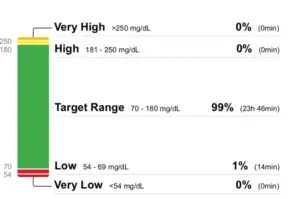A Path to Mindful Nourishment
In today’s fast-paced world, it’s easy to fall into the trap of mindless eating. We often find ourselves grabbing a quick bite on the go, eating in front of screens, and choosing convenience over nutrition.
There’s a better alternative with intentional eating, a practice that encourages being knowledgable about your food and making purposeful dietary choices. Let’s explore what intentional eating is, why it matters, and how you can incorporate it into your daily life.
Being intentional means you make deliberate choices and take actions that align with your priorities. Being intentional involves clearly defining your goals from the start and choosing actions to achieve a specific, meaningful outcome in the future.
What is Intentional Eating?
Intentional eating is the practice of making conscious, deliberate choices about what, when, and how we eat. It involves mindfulness and being fully present during meals, paying attention to hunger and fullness cues, and selecting foods that nourish both body and mind. This approach contrasts with mindless and uninformed eating, where decisions are often driven by external cues like stress, boredom, or social pressure.
The Benefits of Intentional Eating
- Improved Digestion: Eating the right foods for you – slowly and mindfully – allows your body to properly digest food, reducing issues like bloating and indigestion.
- Better Nutrient Absorption: When you focus on your food, you’re more likely to chew thoroughly, which aids in the absorption of nutrients.
- Enhanced Enjoyment: Savoring each bite can make meals more enjoyable and satisfying, reducing the need to overeat.
- Healthier Choices: Being intentional about your food choices naturally leads to selecting more nutritious options, supporting overall health and well-being.
- Emotional Balance: Mindful eating can help you recognize emotional triggers for eating and develop healthier coping mechanisms.
How to Practice Intentional Eating
In our busy lives, it’s easy to overlook the impact of our food choices on our health. Embracing intentional eating can be a game-changer. By making informed decisions about what we eat, we can significantly improve our well-being. Here are some practical tips to help you get started:
Plan Your Meals: Preparing balanced meals that include a variety of nutrients is key. Aim for a mix of lean proteins, complex carbs, healthy fats, and plenty of vegetables. This approach helps you avoid processed foods that may contain harmful substances.
Avoid Plastic Containers: BPA and other bisphenols, such as BPS (bisphenol S) and BPF (bisphenol F), can leach from plastic containers into your food and drinks. These substitutes, often found in BPA-free products, may have similar health risks. Use glass, stainless steel, or truly bisphenol-free containers for storage and reheating.
Use Safe Cookware: Avoid non-stick cookware that can release PFAS when heated. Instead, use stainless steel, cast iron, or ceramic cookware to minimize exposure to these harmful chemicals. (Be aware that some ceramic may have toxins.)
Consider Filtering Your Water: Heavy metals like lead and mercury or high levels of copper can be present in tap water. Using a high-quality water filter can help reduce your exposure to these contaminants.
Choose Fresh, Whole Foods: Opt for fresh, whole foods over processed or packaged items where possible. This reduces your exposure to toxins like PFAS (per- and polyfluoroalkyl substances which are forever chemicals) and BPA/BPS (bisphenol A & S known as a persistent chemicals), often found in food packaging and processed foods.
Limit High-Temperature Cooking: Advanced glycation end products (AGEs) form when food is cooked at high temperatures, such as frying, grilling, or broiling. These compounds can contribute to inflammation and chronic diseases. Opt for cooking methods like steaming, boiling, or baking at lower temperatures.
Choose Organic When Possible: Organic foods are less likely to contain pesticides and heavy metals. Prioritize organic options for produce that is typically high in pesticide residues, such as berries, leafy greens, and apples.
Read Labels: Pay attention to food labels to avoid added sugars, unhealthy fats, and artificial ingredients that can contribute to health issues.
Increase fiber: Eating plenty of fiber each day supports digestion and overall health. Fiber helps your body detoxify and eliminate harmful substances, maintain a healthy micro-biome, and even protects your brain health.
Listen to Your Body: Pay attention to your hunger and fullness signals. Eat when you’re hungry and stop just before you’re totally satisfied. You’ll continue to feel more full over the next 10-20 minutes. Avoiding overeating supports better digestion and nutrient absorption.
Bonus tip: Gather the necessary knowledge to create the best eating plan for you as an individual.
First look at:
- any current health problems you have like gut issues, fatigue, autoimmune disease, high cholesterol, thyroid issues, etc.
- illnesses you are at risk for developing due to family history such as dementia, high blood pressure, diabetes, cancer or heart disease,
- your physical body type, and
- review biomarkers such including labs, blood pressure and glucose data.
- the facts about toxins in food and how to avoid them. Learn the difference between processed and whole foods – it may surprise you to discover how many misconceptions you have!
This information allows you to set priorities with your goals and plans.
By incorporating these practices into your daily routine, you can make more intentional choices that not only nourish your body but also reduce your exposure to harmful toxins.
Overcoming Challenges
Intentional eating can be challenging, especially in a world full of distractions and temptations. Here are a few tips to help you stay on track:
Plan, Plan, Plan!: Preparing meals in advance is always helpful to avoid last-minute, less mindful choices. Look ahead to decide how to stay on track when traveling or eating out.
Practice Patience: Changing eating habits takes time. Be patient with yourself and celebrate all the small victories along the way. We stick with what we acknowledge and celebrate.
Seek Support: Sharing your goals with friends or family may not always be helpful, but joining a community of like-minded individuals for encouragement and accountability can be. It’s best to find a community led by a moderator who can keep the group focused on their goals and how to get back on track, rather than commiserating about failures. Individual coaching can also skyrocket your success.
By incorporating these strategies, you can navigate the challenges of intentional eating and make lasting, positive changes to your health and well-being. Remember, every small step counts, and with the right support and mindset, those steps, when repeated, will soon add up to impressive success and accomplishing your goals.
Intentional eating is more than just a dietary choice; it’s a lifestyle shift towards greater mindfulness and self-care. By making deliberate, informed decisions about what and how you eat, you can enhance your physical health, emotional well-being, and overall quality of life. Start small, stay consistent, and enjoy the journey towards a more intentional way of nourishing your body and soul.



